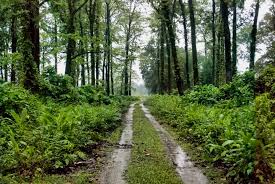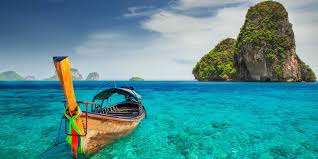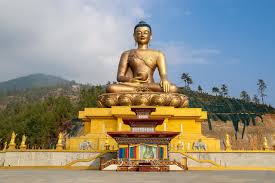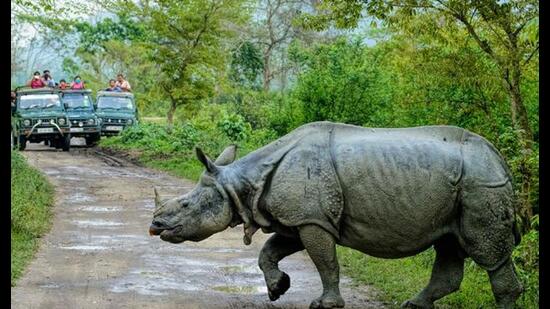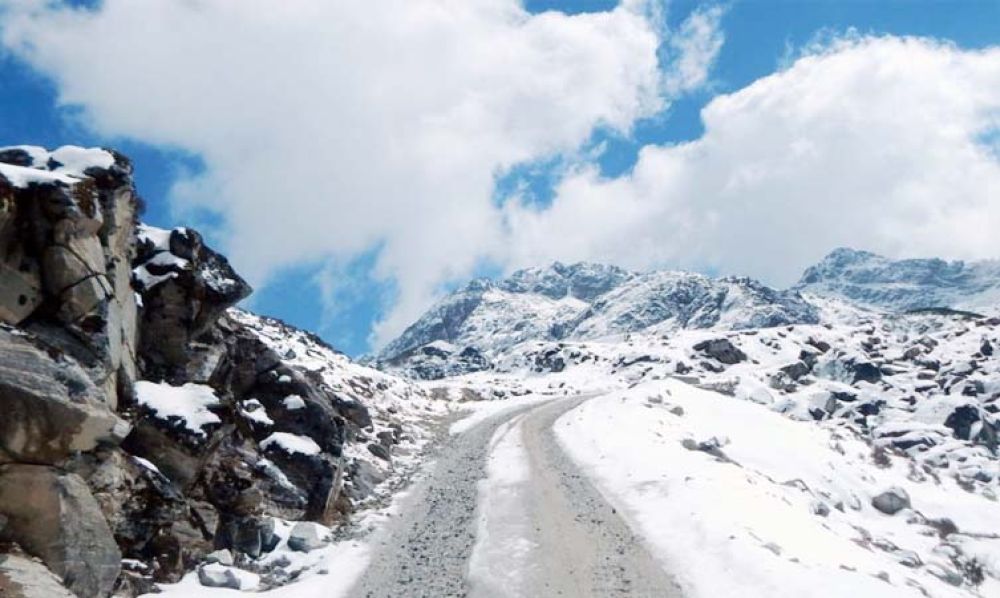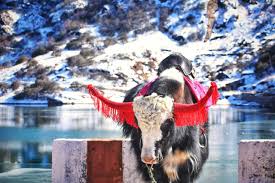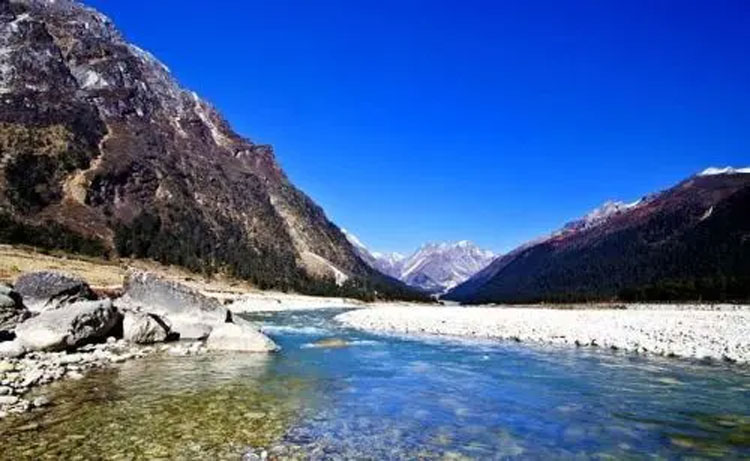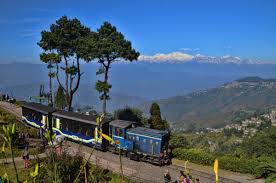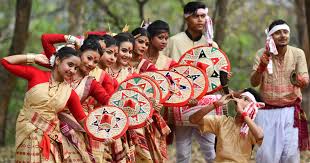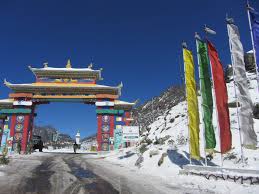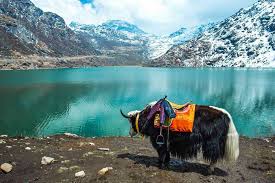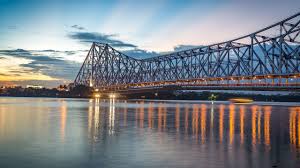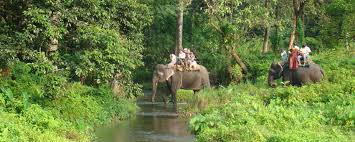
Meghalaya is a state in northeast India. The name means “the abode of clouds” in Sanskrit. The population of Meghalaya as of 2016 is estimated to be 3,211,474. Meghalaya covers an area of approximately 22,430 square kilometers, with a length to breadth ratio of about 3:1.
The state is bounded to the south by the Bangladeshi divisions of Mymensingh and Sylhet, to the west by the Bangladeshi division of Rangpur, and to the north and east by India’s State of Assam. The capital of Meghalaya is Shilong . During the British rule of India, the British imperial authorities nicknamed it the “Scotland of the East”. Meghalaya was previously part of Assam, but on 21 January 1972, the districts of Khasi, Garo and Jaintia hills became the new state of Meghalaya. English is the official language of Meghalaya. The other principal languages spoken include Khasi, Pnar, Hajong, Tiwa (lalung), Rabha, Garo and Biate. Unlike many Indian states, Meghalaya has historically followed a matrilineal system where the lineage and inheritance are traced through women; the youngest daughter inherits all wealth and she also takes care of her parents.
The state is the wettest region of India, recording an average of 12,000 mm (470 in) of rain a year. About 70% of the state is forested. The Meghalaya subtropical forests eco-region encompasses the state; its mountain forests are distinct from the lowland tropical forests to the north and south. The forests are notable for their biodiversity of mammals, birds, and plants.
Meghalaya has predominantly an agrarian economy with a significant commercial forestry industry. The important crops are potatoes, rice, maize, pineapples, bananas, papayas, spices, etc. The service sector is made up of real estate and insurance companies. Meghalaya’s gross state domestic product for 2012 was estimated at 16,173 crore (US$2.5 billion) in current prices. The state is geologically rich in minerals, but it has no significant industries. The state has about 1,170 km (730 mi) of national highways. It is also a major logistical center for trade with Bangladesh.
Meghalaya was formed by carving out two districts from the state of Assam: the United Khasi Hills and Jaintia Hills, and the Garo Hills on 21 January 1972. Before attaining full statehood, Meghalaya was given semi-autonomous status in 1970.
The Khasi, Garo, and Jaintia tribes had their own kingdoms until they came under British administration in the 19th century. Later, the British incorporated Meghalaya into Assam in 1835. The region enjoyed semi-independent status by virtue of a treaty relationship with the British Crown. When Bengal was partitioned on 16 October 1905 by Lord Curzon, Meghalaya became a part of the new province of Eastern Bengal and Assam. However, when the partition was reversed in 1912, Meghalaya became a part of the province of Assam. On 3 January 1921 in pursuance of Section 52A of the Government of India Act of 1919, the governor-general-in-council declared the areas now in Meghalaya, other than the Khasi states, as “backward tracts.” Subsequently, the British administration enacted the Government of India Act of 1935, which regrouped the backward tracts into two categories: “excluded” and “partially excluded” areas.
At the time of Indian independence in 1947, present day Meghalaya constituted two districts of Assam and enjoyed limited autonomy within the state of Assam. A movement for a separate Hill State began in 1960. The Assam Reorganisation (Meghalaya) Act of 1969 accorded an autonomous status to the state of Meghalaya. The Act came into effect on 2 April 1970, and an autonomous state of Meghalaya was born out of Assam. The autonomous state had a 37-member legislature in accordance with the Sixth schedule to the Indian constitution.
In 1971, the Parliament passed the North-Eastern Areas (Reorganization) Act, 1971, which conferred full statehood on the autonomous state of Meghalaya. Meghalaya attained statehood on 21 January 1972, with a Legislative Assembly of its own.
About 70% of the state is forested, of which 9,496 km2 (3,666 sq mi) is dense primary subtropical forest. The Meghalayan forests are considered to be among the richest botanical habitats of Asia. These forests receive abundant rainfall and support a vast variety of floral and faunal biodiversity. A small portion of the forest area in Meghalaya is under what are known as “sacred groves” (see Sacred groves of India). These are small pockets of ancient forest that have been preserved by the communities for hundreds of years due to religious and cultural beliefs. These forests are reserved for religious rituals and generally remain protected from any exploitation. These sacred groves harbour many rare plant and animal species. The Nokrek Biosphere Reserve in the West Garo Hills and the Balphakram National Park in the South Garo Hills are considered to be the most biodiversity-rich sites in Meghalaya. In addition, Meghalaya has three wildlife sanctuaries. These are the Nongkhyllem Wildlife Sanctuary, the Siju Sanctuary and the Bhagmara Sanctuary, which is also the home of the insect eating pitcher plant Nepenthes khasiana.
Due to diverse climatic and topographic conditions, Meghalayan forests support a vast floral diversity, including a large variety of parasites, epiphytes, succulent plants and shrubs. Two of the most important tree varieties are Shorea robusta (sal tree) and Tectona Grandis (teak). Meghalaya is also the home to a large variety of fruits, vegetables, spices and medicinal plants. Meghalaya is also famous for its large variety of orchids — nearly 325 of them. Of these the largest variety is found in the Mawsmai, Mawmluh and Sohrarim forests in the Khasi hills.
Meghalaya also has a large variety of mammals, birds, reptiles and insects. The important mammal species include elephants, bear, red pandas, civets, mongooses, weasels, rodents, gaur, wild buffalo, deer, wild boar and a number of primates. Meghalaya also has a large variety of bats. The limestone caves in Meghalaya such as the Siju Cave are home to some of the nation’s rarest bat species. The hoolock gibbon is found in all districts of Meghalaya.
Common reptiles in Meghalaya are lizards, crocodiles and tortoises. Meghalaya also has a number of snakes including the python, copperhead, green tree racer, Indian cobra, king cobra, coral snake and vipers.
Meghalaya’s forests host 660 species of birds, many of which are endemic to Himalayan foothills, Tibet and southeast Asia. Of the birds found in Meghalaya forests, 34 are on worldwide threatened species list and 9 are on critically endangered list. Prominent birds spotted in Meghalaya include those from the families of Phasianidae, Anatidae, Podicipedidae, Ciconiidae, Threskiornithidae, Ardeidae, Pelecanidae, Phalacrocoracidae, Anhingidae, Falconidae, Accipitridae, Otididae, Rallidae, Heliornithidae, Gruidae, Turnicidae, Burhinidae, Charadriidae, Glareolidae, Scolopacidae, Jacanidae, Columbidae, Psittacidae, Cuculidae, Strigidae, Caprimulgidae, Apodidae, Alcedinidae, Bucerotidae, Ramphastidae, Picidae, Campephagidae, Dicruridae, Corvidae, Hirundinidae, Cisticolidae, Pycnonotidae, Sylviidae, Timaliidae, Sittidae, Sturnidae, Turdidae, Nectariniidae and Muscicapidae. Each of these families have many species. The great Indian hornbill is the largest bird in Meghalaya. Other regional birds found include the grey peacock pheasant, the large Indian parakeet, the common green pigeon and the blue jay. Meghalaya is also home to over 250 species of butterflies, nearly a quarter of all butterfly species found in India.
Places of Interests-
Shillong , Mawphlang , Cherapunjee , Laitkynsew , Mawsynram , Mawlynnong Village , Umiam Lake , Mairang , Jakrem , Mawkyrwat , Mawthadraishan, Nongkhnum Island , Ranikor etc.
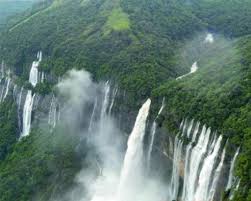
Cherrapunjee, also known as Sohra, is a high-altitude town in the northeast Indian state of Meghalaya. It\\\'s known for its living root bridges, made from rubber trees. To the northeast, Mawkdok Dympep Valley View Point overlooks verdant gorges. In the surrounding hills, the Noh-Kalikai, Dain-Thlen and Kynrem waterfalls plunge from forested clifftops. South of town, Mawsmai Cave is illuminated to show its stalagmites.
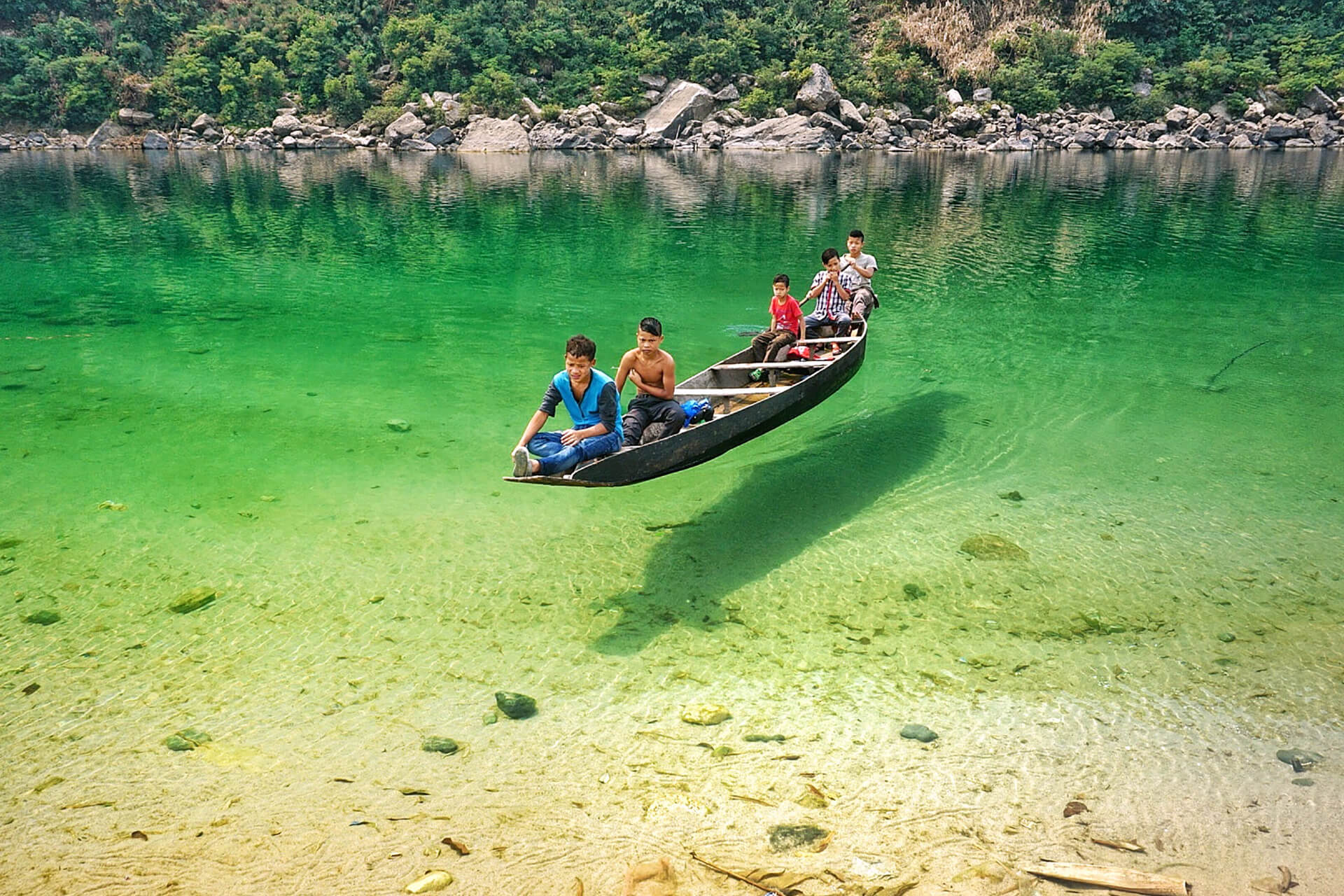
Mawlynnong Asia\'s Cleanest Village
Mawlynnong has earned a reputation for being one of the cleanest villages in Asia, but a sobriquet that does more justice is that of God’s Own Garden. The fruit orchards, the rushing streams, the evergreen surroundings, the swaying palms, and the well-preserved traditions of the Khasis provide a picture-perfect stage on the edge of Meghalaya’s southern ranges.
Arguably the most famous icon of Meghalaya is found here – the Nohwet Living Root Bridge. The bridge was created by weaving the roots of the Ficus Elastica tree around a framework and continuing this process for generations. These living root bridges are a staple of Khasi traditional architecture and were important for the villages in the steep valleys and mountains, helping the people connect with each other and travel to the plains to trade. These fascinating bridges are built in harmony with nature and get stronger as they grow older. After admiring the bridge, you can also take a dip in the gushing, cool waters of the river.
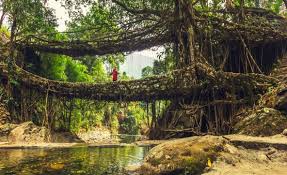
Dawki is a border town in the south of Meghalaya and a great base to explore nearby Shnongpdeng and Darrang – famous riverside camps. You will witness a blend of cultures and changing topography as the hills merge into the plains of Northern Bangladesh. Some of the evening scenery here is stunning as you watch the lights glow above the neighbouring plains over the gentle, dark river.
Shnongpdeng Village is 8 km north of Dawki along the winding Umngot. With waters so clear, you can peer into the bottom and count the stones – that is how the Umngot River can be described during the peak pre-monsoon, autumn, and winter seasons. Whether you want to enjoy a gentle boat ride through a stretch flanked by forests or you want to take a dip into the river in scuba gear, the activities in Shnongpdeng will keep you occupied for days.
Camping, swimming, and fishing are some of the fun outdoor activities in Shnongpdeng. You can indulge in one of the most thrilling ziplines and rappel down one of the many striking rock formations that line up the Umngot.
A bridge that spans the Umngot allows for fantastic pictures and perspectives and there are picnic spots near the river.
There are plenty of recognized resorts and camps in Dawki, Shnongpdeng, and surrounding areas. Ensure that all your water activities are done with expert supervision and necessary safety gear.
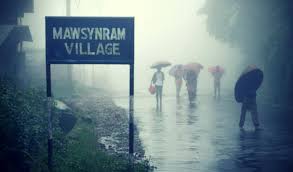
Ever thought of a place where waterfalls are so plentiful that they become a nuisance? That can be the scene on the highway to the famed town of Mawsynram when your vehicle might just have to drive right through a monsoon cascade falling from the mountainside.
The Mawsynram plateau region has received enough attention for its world-record rainfall but there are many more unique sights here. Krem Puri is the longest sandstone cave in the world. Getting to the entry requires a steep descent down one of the valley slopes. The labyrinth has just been recently mapped and visitors need to go in with proper caving gear and with a local guide.
Wildlife enthusiasts can head over to Phlangwanbroi village and trek deep into the jungle, known for its protected populations of the Hoolock Gibbon. Krem Dam, a large cave with an underground waterway and beaches is another famous site that will inspire the spelunker in you.
One of the best places for adventurers to visit when in the Mawsynram region is Mawlyngbna, known for the pretty Umkhakoi lake and as a hub for water activities like kayaking and swimming. Weiing Lakeside Camp in nearby Phlang Mawsyrpat village is a favoured place for serious travellers who want to spend time in this captivating region of Meghalaya. When in Mawlyngbna, do not miss the celebrated fossil sites – evidence of the place’s underwater history that goes back millions and millions of years. The Split Rock is one of the more curious attractions – a giant rock split into two, the event attributed to the devastating Magnitude-8 Assam earthquake of 1897.
Enroute to Mawsynram, the legendary Lum Symper hill and the Mawjymbuin caves are popular stops. There are community-run lodges and homestays in many villages here and visitors are recommended to spend a night here at least so they can enjoy some fresh nature trails and bird watching in the mornings.
Major Spots:
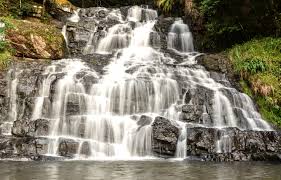
Founded in the second half of the nineteenth century by the British, Shillong town has enjoyed a cosmopolitan core since its beginnings. This reflects in the unique culture of Meghalaya’s scenic capital – a place where every festival is celebrated with zest and travellers will stumble across cuisines from across the country and the world.
Shillong’s modern reputation is built on its love for music and there have been many legendary musicians who call this home. There are many faces to Shillong – the quiet neighbourhoods with whistling pine still thrive but there is also a vibrant downtown area. Shillong is also known for its emerging café culture. Attractions here include the pleasant, tree-lined Ward’s Lake and the sprawling Golf Links – a favourite outdoor recreational space for the residents. Shillong has plenty of hotels, guesthouses and homestays spread across the landscape especially in the centrally located Police Bazaar. If you want to chart the colonial history of the place, we would recommend the Shillong Heritage Walk.
